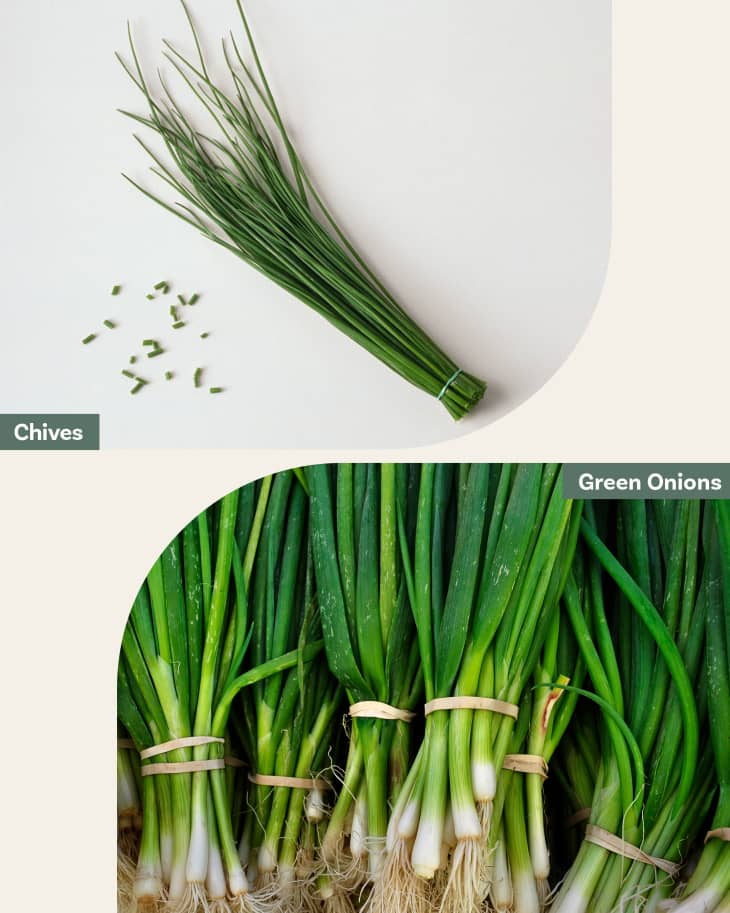What’s the Difference Between Chives and Green Onions?
Adding chives or green onions to your cooking brings a welcome layer of garlicky complexity and savory flavor to your meal. But when you’re standing in the produce aisle finalizing your ingredient list, how can you tell the difference between chives and green onion? Are they interchangeable? And when should you use each? It’s time to break down everything you need to know to distinguish these multi-purpose alliums.
Are Green Onions and Chives the Same Thing?
Chives and green onions (also called scallions) are technically related, but they are not the same thing. Chives and green onions are two distinct species of allium, with chives categorized as an herb and green onions categorized as a vegetable, according to Brittanica. Both, however, are a part of the allium genus known as “cultivated garlic,” and contain very similar nutritional qualities.
What Is the Difference Between Chives and Green Onions?
While both chives and green onions are identified by their long, hollow, and cylindrical green stems, they differ in taste and texture.
- Chives bear much more delicate, slim stems with a more uniformly dark green color. Chives are frequently sold without their purple flowering plant, but if you do purchase them whole, the entire plant is edible. Chives have a milder flavor than green onions and very little discernible texture due to their smaller stems, which is often why they’re reserved for garnishing.
- Green onions have longer, wider stems with more varying shades of green and are often sold with their white bulbs attached. The bulb of the green onion has a bold onion flavor, although not quite as strong as regular onion. The darker green parts of a green onion, though, are more mild in flavor, with a subtle onion-y taste. Green onions, as a whole, have a stronger flavor profile than chives and a more structured, crunchier texture.
Can I Substitute Chives for Green Onions?
Both chives and green onion have a similar enough flavor that in a pinch, you can substitute one for another. Keep in mind, though, that green onions have a stronger onion-like flavor, so you may need to use more chives than you would green onions, depending on the dish. You’ll want to carefully monitor how the recipes call for each to be prepared, and you’ll need to adjust the quantity of each should you choose to swap.
Chives
work well as raw garnishes
Green onions — which have a stronger flavor when left raw — can be mixed into dips, served on top of a savory grits breakfast parfait, or used to finish a baked potato soup with bacon, scallions and cheddar, and are commonly cooked into stir-fries and scallion pancakes. If you do choose to substitute chives for green onions, keep in mind that as they are smaller, you’ll need to use more of them to achieve the same flavor impact.
But whether you decide to use chives or green onions in your cooking, know that you’ll be adding an important savory, tangy flavor that’s sure to enhance your dish!
